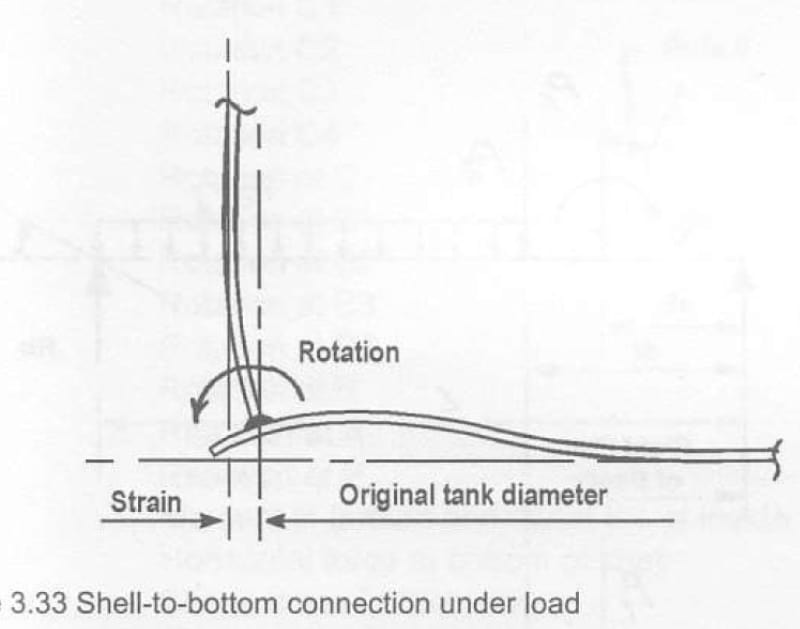Hi all,
I am currently working on an AST project where the MDMT is -20 C- due to which we cant use our usual go to material, A-36, for shell and annular plates unless its impact tested (understandably so). Long story short, after discussing with our client, all shell plates above ~14mm are being designed for ASTM A 516 60 and those lower than that are being designed for A-36 Group 2 as per Figure 4.1a in API 650.
My question stems from a discussion I had with my colleagues regarding the stipulation in 4.2.10.1 and why annular plates/sketch plates fall under this category but the rest of the bottom plates do not. They argue that the whole bottom is still in contact with the fluid and will experience similar loads(they are lap welded to the annular plates, after all) so why should it be different from the annular plates? My contention was that the shell-bottom joint acts as a rigid joint and hence experiences greater dynamic stresses and moments that the shell experiences due to the attached piping.
Can the good people here elucidate the matter and give their own inputs?
I am currently working on an AST project where the MDMT is -20 C- due to which we cant use our usual go to material, A-36, for shell and annular plates unless its impact tested (understandably so). Long story short, after discussing with our client, all shell plates above ~14mm are being designed for ASTM A 516 60 and those lower than that are being designed for A-36 Group 2 as per Figure 4.1a in API 650.
My question stems from a discussion I had with my colleagues regarding the stipulation in 4.2.10.1 and why annular plates/sketch plates fall under this category but the rest of the bottom plates do not. They argue that the whole bottom is still in contact with the fluid and will experience similar loads(they are lap welded to the annular plates, after all) so why should it be different from the annular plates? My contention was that the shell-bottom joint acts as a rigid joint and hence experiences greater dynamic stresses and moments that the shell experiences due to the attached piping.
Can the good people here elucidate the matter and give their own inputs?

